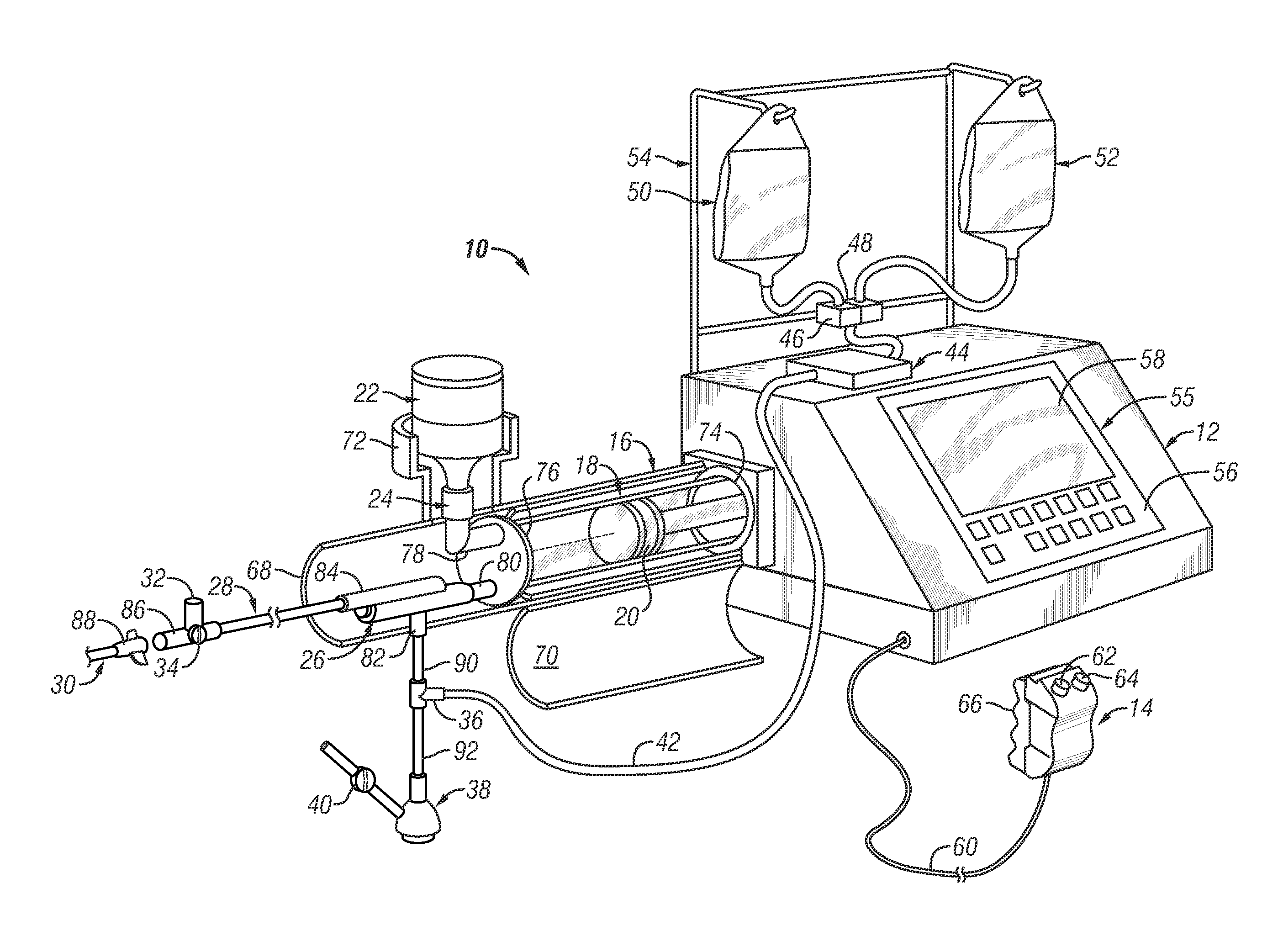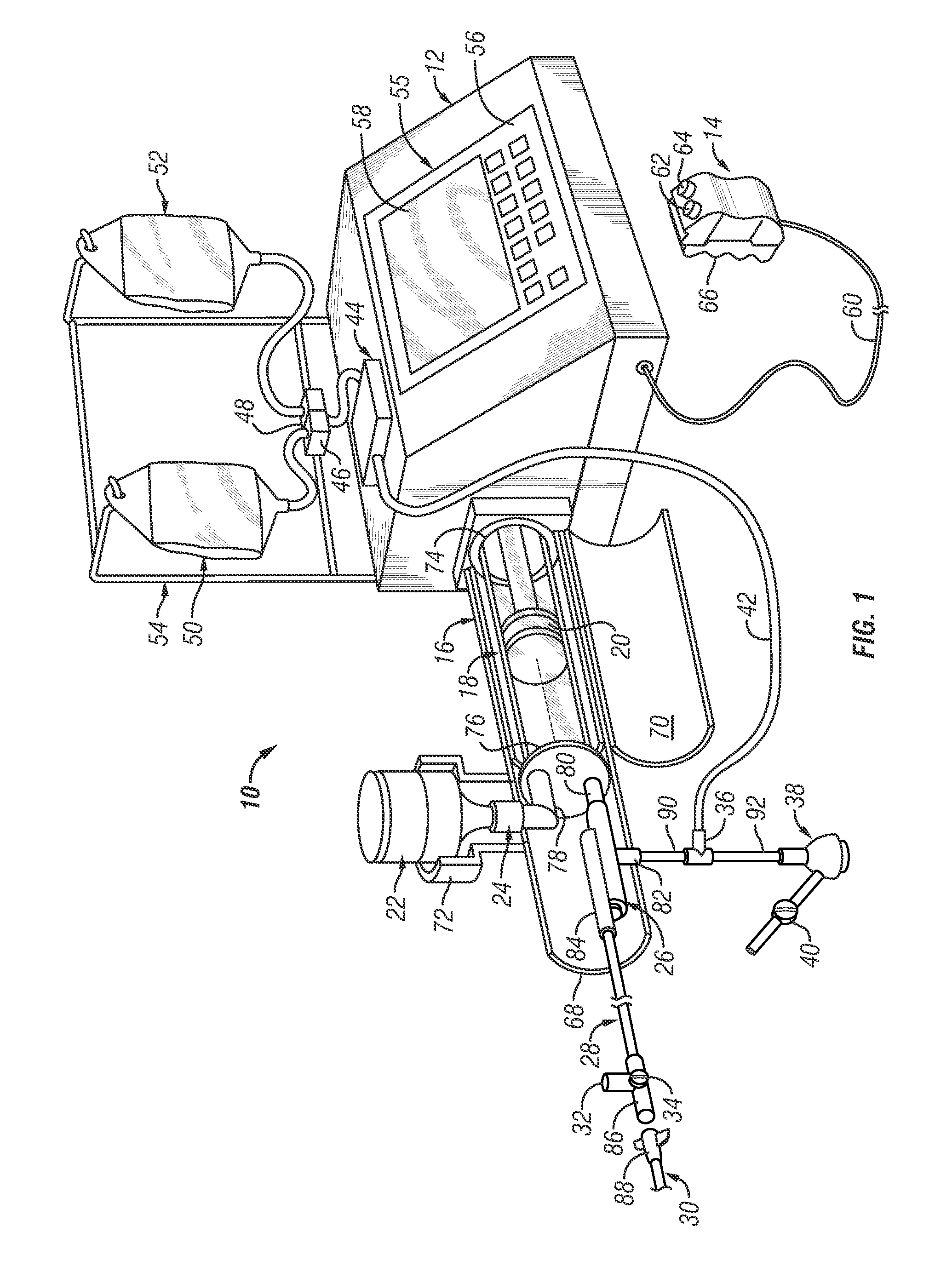System and method for multiple injection procedures on heart vessels
a heart valve and multiple injection technology, applied in the field of angiography, can solve the problems of toxic effects, inability to accommodate any safety features in manual systems, and suboptimal quality of angiographic studies, and achieve the effects of convenient and accurate operation, no chance of operator error, and flexible and user-friendly
- Summary
- Abstract
- Description
- Claims
- Application Information
AI Technical Summary
Benefits of technology
Problems solved by technology
Method used
Image
Examples
Embodiment Construction
[0062]As will be appreciated upon a more detailed description herein, the principles of this invention can be applied to many different physical configurations of automated angiographic injector systems. An example of one such system, as described in more detail in U.S. patent application Ser. No. 08 / 426,149 referenced above and herein fully incorporated by reference, will be generally described below. It will be understood that while specific angiographic system(s) will be described with respect to preferred embodiments of the invention, the principles of this invention are not limited to use in the preferred embodiments described. Referring to the Drawings, FIG. 1 shows an angiographic injector system 10 for injecting radiographic contrast material into a blood vessel under interactive physician control. System 10 includes main console 12, hand held remote control 14, syringe holder 16, syringe body 18, syringe plunger 20, radiographic material reservoir (bottle) 22, one-way valve...
PUM
 Login to View More
Login to View More Abstract
Description
Claims
Application Information
 Login to View More
Login to View More - R&D
- Intellectual Property
- Life Sciences
- Materials
- Tech Scout
- Unparalleled Data Quality
- Higher Quality Content
- 60% Fewer Hallucinations
Browse by: Latest US Patents, China's latest patents, Technical Efficacy Thesaurus, Application Domain, Technology Topic, Popular Technical Reports.
© 2025 PatSnap. All rights reserved.Legal|Privacy policy|Modern Slavery Act Transparency Statement|Sitemap|About US| Contact US: help@patsnap.com



